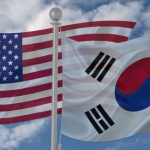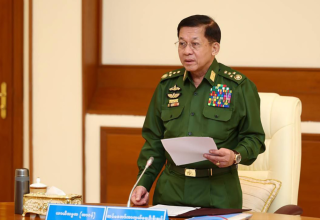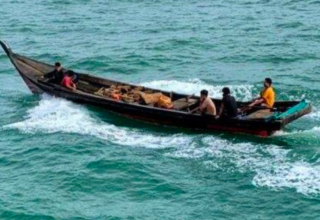
Thursday saw South Korea accuse North Korea of carrying on their custom of launching trash-filled balloons across the border. Between Wednesday night and early Thursday morning, the Joint Chiefs of Staff in Seoul claimed to have seen about 420 balloons entering South Korean territory. As of now, the capital of South Korea and the surrounding Gyeonggi province have turned up about twenty balloons.
Balloon Sightings and Waste Products
The balloons included plastic bottles, paper garbage, and other non-hazardous objects according to officials. The South Korean administration expressed worry over the continuous provocations and accused North Korea of launching more balloons later into Thursday evening, especially in spite of the absence of harmful drugs. The Joint Chiefs of Staff advised South Koreans not to handle any falling balloons and to report them to local authorities. Not yet any significant damage has been recorded.
Seoul’s municipal government sent a sequence of SMS warnings on Wednesday night in reaction to the balloon sightings, advising citizens to remain indoors and to be wary of any anything falling from the heavens. The alarms were a part of a larger public safety campaign as North Korean balloons keep crossing into South Korean land.
Psychological Warfare Between the Two Koreas
This most recent event fits a larger psychological warfare effort between North and South Korea, which has been more intense since March of this year. Thousands of balloons apparently have been sent by North Korea across the border loaded with waste products including dung, textile scraps, and even cigarette butts. These acts of provocation are considered as retribution against South Korean civilian activists who have been distributing anti-North Korean propaganda pamphlets into the North over years using balloons.
With both sides stepping up their attempts to destabilize the other, the conflict between the two countries has grown more evident. One of North Korea’s trash-filled balloons landed on the South Korean presidential palace in July, raising questions about the possible vulnerability of crucial government buildings. Authorities verified, though, that the balloon included no hazardous elements and no one was hurt.
Keep Reading
South Korea has set loudspeakers along the front line to blast propaganda messages and K-pop music into the North in response for North Korea’s balloon campaign. These steps are meant to offset North Korea’s provocations and keep psychological pressure on the government intact.
Increasing Regional Tensions
The balloon events are happening against a larger backdrop of growing hostilities on the Korean Peninsula. The tension between North Korea and South Korea has increased with their rising nuclear aspirations as well as their increasing cooperative military operations with the United States. Psychological warfare’s tit-for–tat activities have simply accentuated an already complicated scenario by raising questions regarding future interactions between the two countries.
Particularly in view of North Korea’s nuclear weapon development and continuous provocations via several channels, including the use of balloons to deliver messages and trash into South Korean territory, the international community keeps close observation of the situation despite high tensions.
The continuous conflict between the two Koreas is highlighted by the continuous exchange of provocations, especially through North Korea’s use of trash balloons. Although these events seem little in comparison to other global concerns, they remind us of the still-present unpredictability on the Korean Peninsula. Both countries are in a difficult balancing act; North Korea wants to show its might and South Korea reacts in ways that both safeguard its people and convey messages to the North. It is still to be seen how these little but symbolic gestures will affect the more general dynamics between the two countries as the circumstances evolve.

























